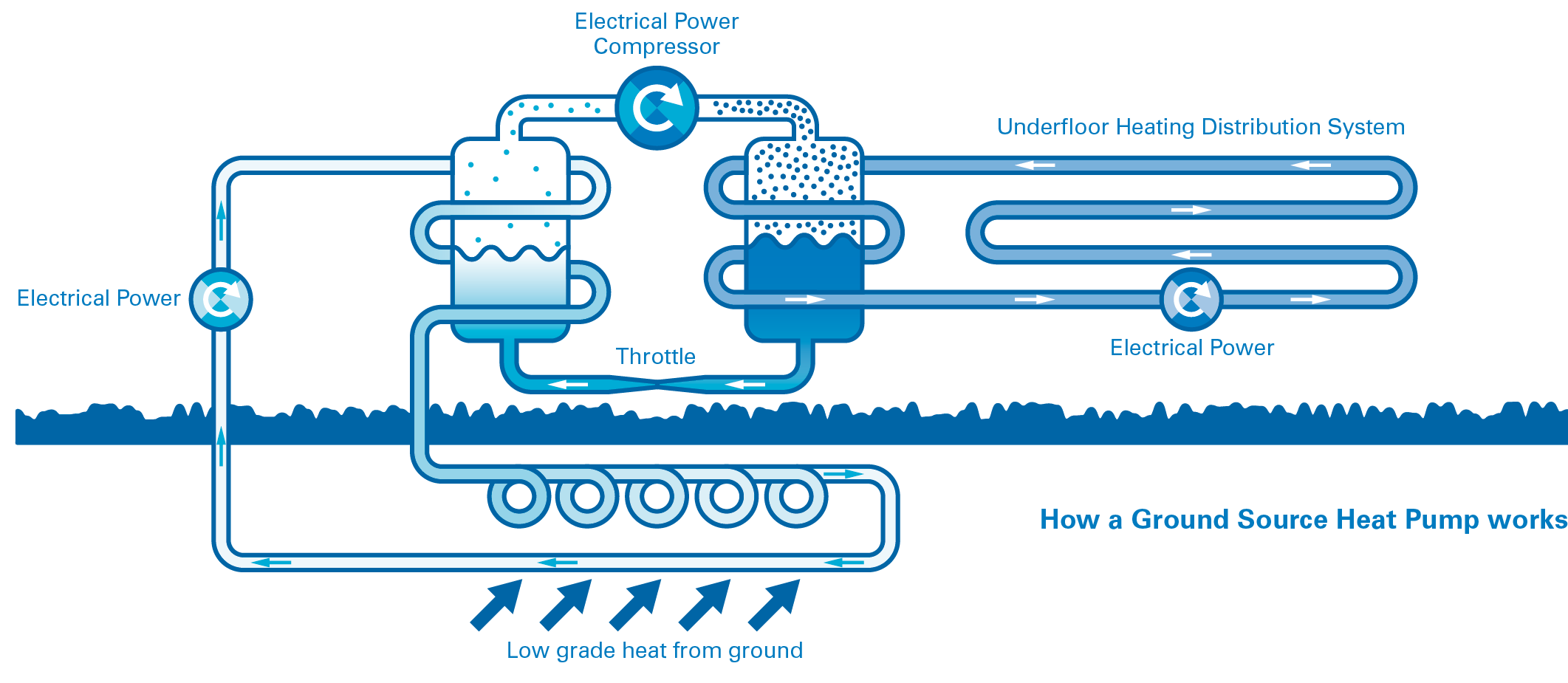To work provide the best operational savings a well-insulated building is essential.
GSHP’s are often be best suited to new-build properties where the central heating system can be optimised for use with the lower temperature thermal source than compared to conventional boilers. Whilst GSHP’s generate less CO2 than conventional heating systems they still need to use electricity to drive the pump. Therefore, they cannot be considered completely zero-carbon unless the electricity is provided by a renewable source.
The cost of installing a GSHP is significantly more expensive than an ASHP. The Energy Saving Trust (EST) estimate that the cost of installing a typical GSHP system ranges between £14,000 to £19,000, depending on the size of the system and excludes the cost of fitting underfloor heating and/or radiators. However, they usually require less electrical energy to recover an equivalent amount of thermal energy than that of an ASHP
GSHP’s usually require little maintenance and can provide heating and hot water, however need enough space outside the property for the external horizontal ground loops or vertical boreholes. Whilst they are more complex to install than air source heat pumps, they avoid the external noise issues associated with ASHP’s. GSHP’s also typically require planning permission due to the requirement to bury a significant area of ground loops.






